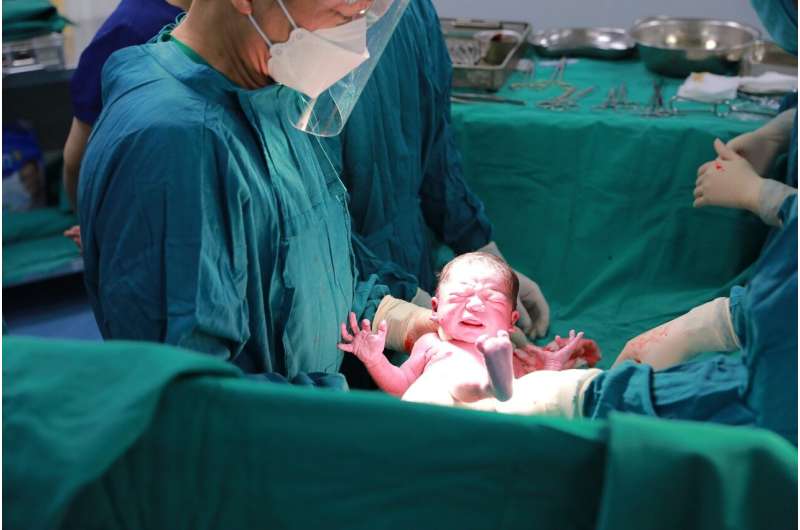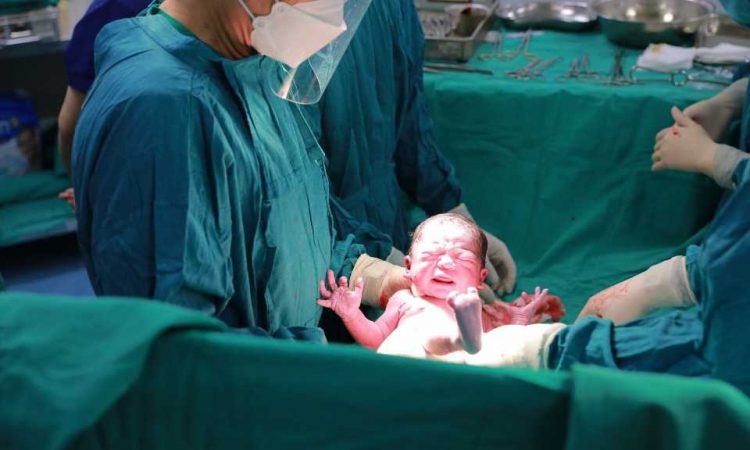
A new study from the School of Nursing and Midwifery has found that factors influencing a clinician’s decision to perform a cesarean-section on a first-time mother, are complex and multifactorial.
More than one third of first-time mothers are giving birth by cesarean section (CS) in the Republic of Ireland despite evidence suggesting no additional benefits to mothers and babies. There has been a steady rise (over 30% increase), year on year, in cesarean birth rates, over the last decade.
A new study from the School of Nursing and Midwifery, Trinity College has found that factors that influence a clinician’s decision to perform a CS on a first-time mother, are complex and multifactorial. Researchers found that decisions are driven by a clinician’s fear of adverse outcomes and subsequent litigation, personal preference, and their threshold to intervene and the culture of practice within the system, and finally by organizational guidelines and policies. The study is published in the current edition of the journal PLOS One.
The team conducted one-to-one interviews with 20 obstetricians and 15 midwives who were involved in the decision-making process for CS in three maternity units in the Republic of Ireland.
Three interrelated themes emerged: “a fear factor,” “clinician driven factors” and “a system perspective.” Findings suggested that decisions to perform CS are based on clinicians’ perceived fear, personal beliefs, and organizational factors. A deep insight into these factors will help clinicians identify and evaluate modifiable factors in practice to avoid excess CSs. This may ultimately help develop practical approaches to reduce the number of CSs safely and effectively.
Key findings
- Factors that influence clinicians’ decision-making are driven by their fear of adverse outcomes and subsequent litigation, personal preference, and their threshold to intervene and the culture of practice within the system, and organizational guidelines and policies.
- Flexible criteria and ambiguity in inducing labor are major contributing factors to the rising rates of CS.
- Women’s requests may not be major factor influencing the decision-making for CS for first-time mothers.
Looking ahead, researchers are hopeful these findings will help clinicians reflect on their decision-making practices to look for factors that can be modified to stop the rise of CSs. Furthermore, as the study outcomes are derived from the decision-makers’ perspective, researchers are optimistic that the findings will help develop practical strategies to reduce any unnecessary CSs safely.
Sunita Panda, assistant professor in midwifery, School of Nursing and Midwifery, and lead author of the study said, “Becoming a mother is a unique part of a woman’s life and most women wish for a natural birth with a sense of achievement. However, the steady rising rates of cesarean section has become a growing concern with more than one-third of mothers giving birth to their first babies by cesarean section. It is crucial and timely to understand the factors that influence the decision-making and take action to stop the rising rates of cesarean sections safely and effectively.”
Professor Maeve Eogan, obstetrician and gynecologist, Rotunda Hospital said, “This paper contributes to knowledge around decision-making in obstetrics and midwifery. As other papers have identified, many variables, including important human factors, influence these decisions and it is important to integrate these findings in obstetric, midwifery and service user education, as well as in-service development.”
Dr. Krysia Lynch, maternity care expert and chair AIMS Ireland said, “This is an incredibly important piece of research informing both policy makers and service users as to why our cesarean birth rates are so high and rapidly climbing. The most recent maternity safety statements available for 2022 show five of our units with a first-time mother cesarean birth rate of over 50% with another three having a rate of over 40%. These rates are perhaps partially informed by our equally high induction of labor rates. Service users expect that our high cesarean rates reflect evidence-based practice and absolute need, this research paper has clearly shown that this is not the case.
“This research also highlights the lack of partnership between providers and service users and indicates that the pregnant person is not at the center of their care. AIMS Ireland would urge policy makers and those involved in implementing the National Maternity Strategy to take immediate action to curb our ever-increasing cesarean birth rate before it accelerates out of all control.”
More information:
Sunita Panda et al, Clinicians’ views of factors influencing decision-making for CS for first-time mothers—A qualitative descriptive study, PLOS ONE (2022). DOI: 10.1371/journal.pone.0279403
Journal information:
PLoS ONE
Source: Read Full Article
